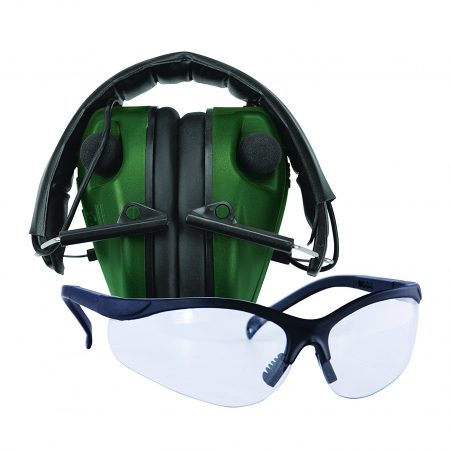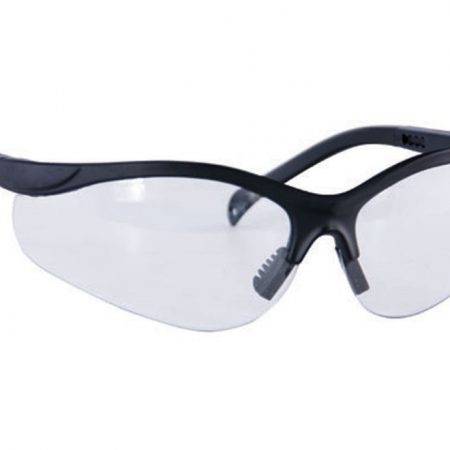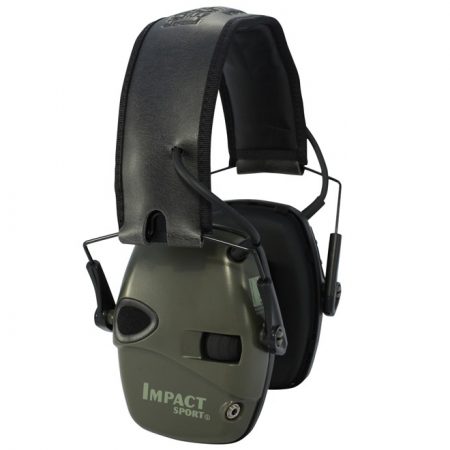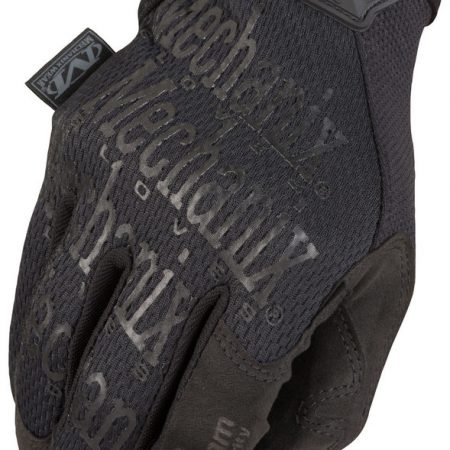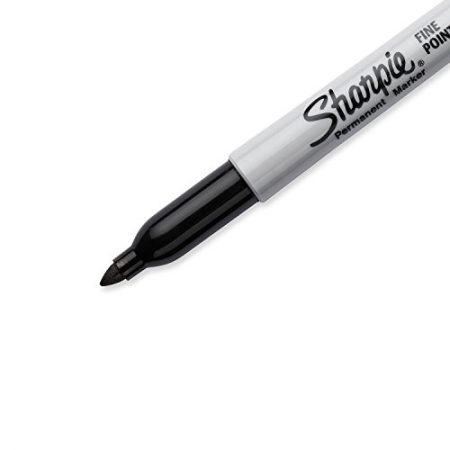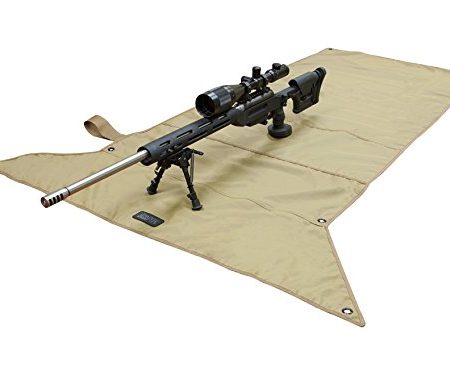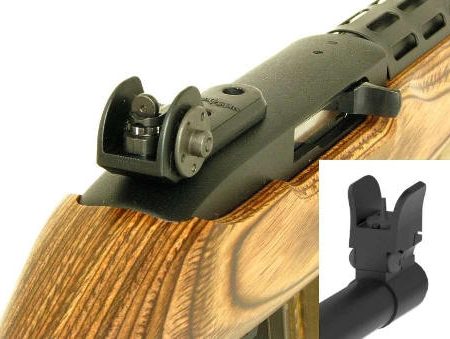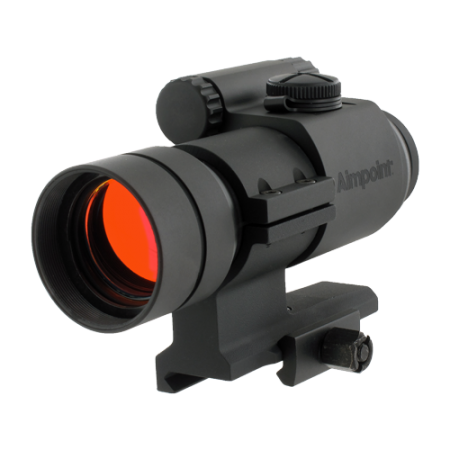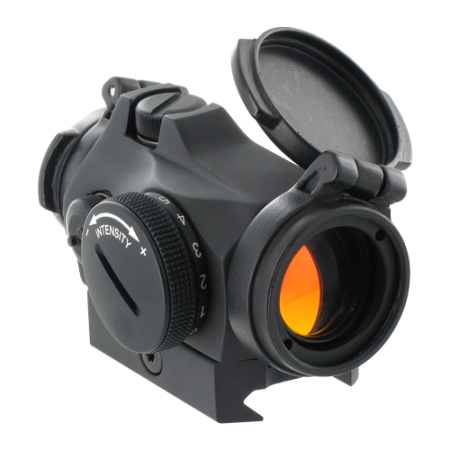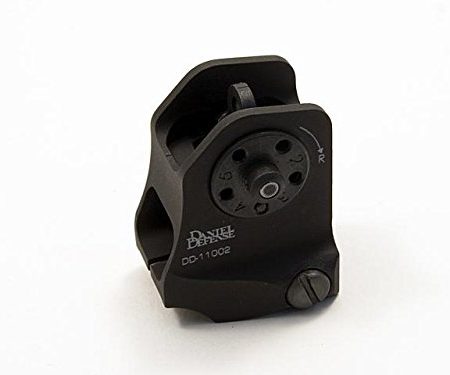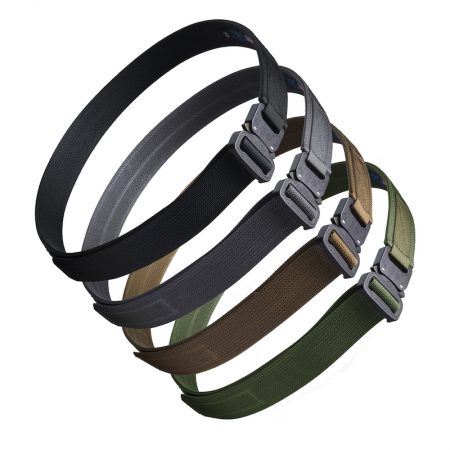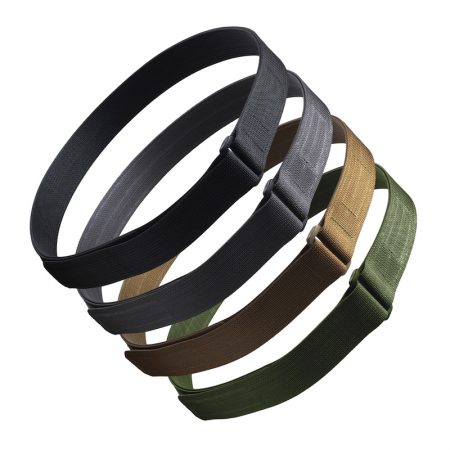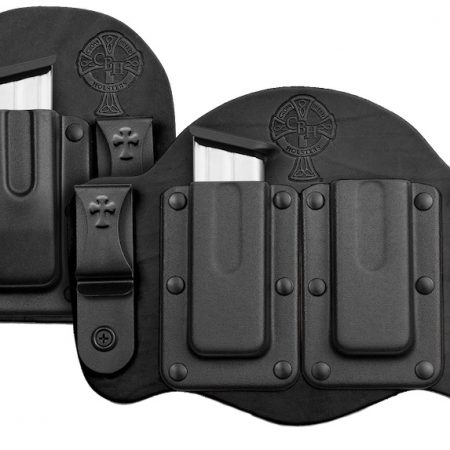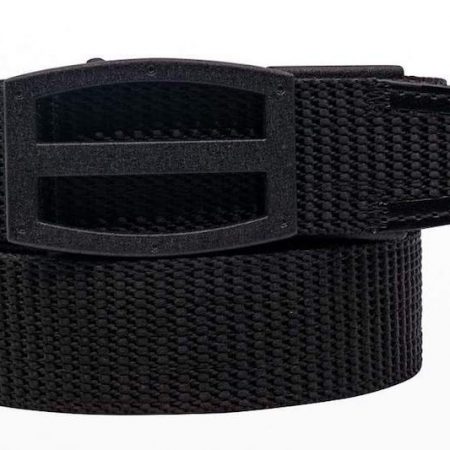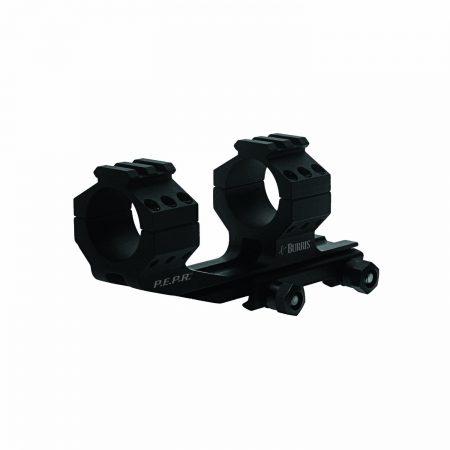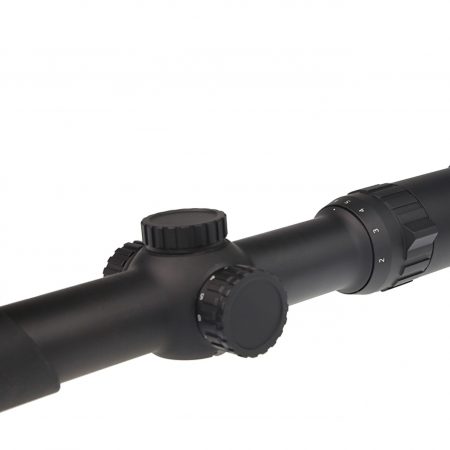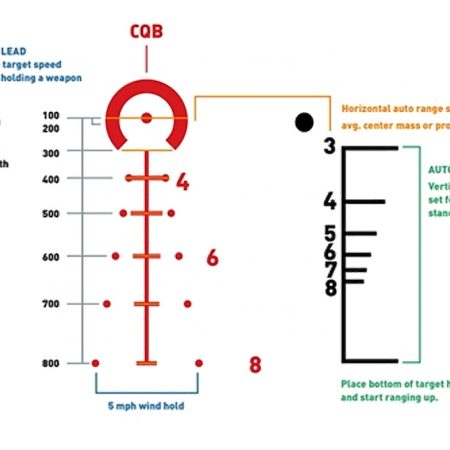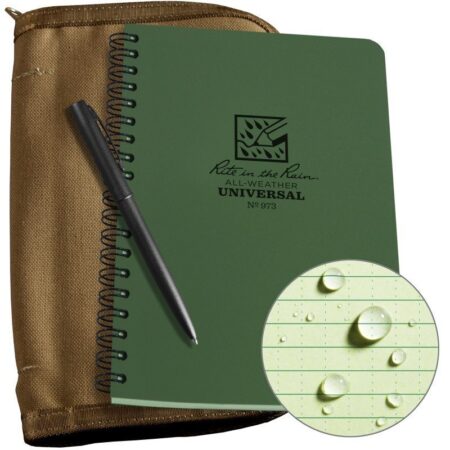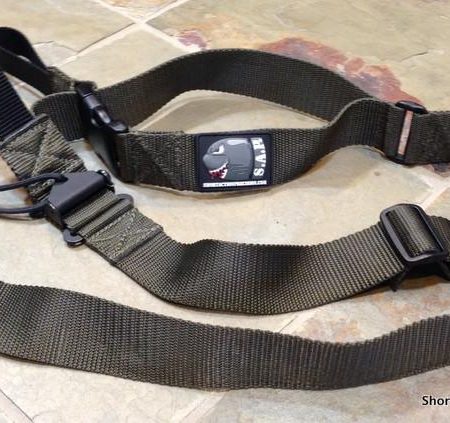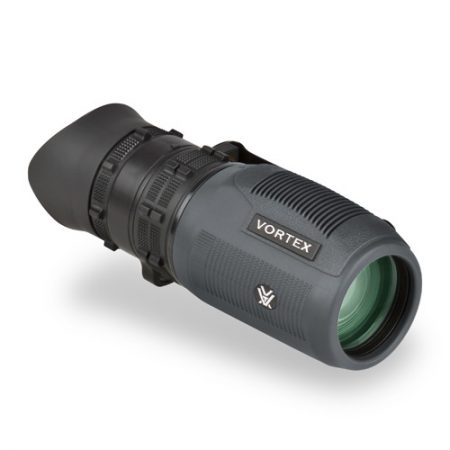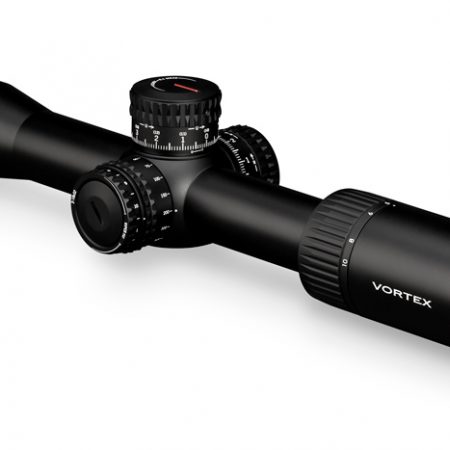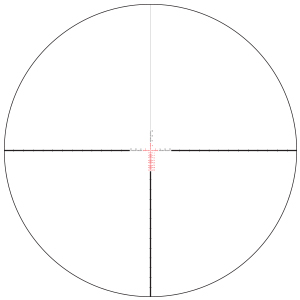What to Bring
The most common question we are asked is “what to bring?” This page provides some guidelines that will ensure you have the best experience at one of our events. The specific products and vendors below are just suggestions or examples of a type of product that may work well for you. There are many other similar gear options.
All Events
- Our volunteers are neither gunsmiths nor armorers; please ensure your firearm is safe and functional!
- Eye and ear protection is required at all events. We highly suggest electronic ear protection as it makes it easier to hear instruction and line commands.
- Use only the correct ammunition for your gun. Most guns have the proper ammunition type stamped on the barrel. Do not shoot without the proper ammunition. Revere’s Riders strongly suggests the use of factory ammunition. Handloads are generally not necessary at our service-rifle and pistol inspired events—originally these events were intended to be fired with bulk issue “ball” ammunition!
- Dress appropriately for a day outside at a firing range (closed-toe shoes, high neck shirts, long sleeves if weather allows, etc). Our events occur rain or shine. Dress for the weather!
- Avoid loose-fitting clothing, especially around the neck line. You don’t want hot brass going down your shirt!
- A hat with brim will keep the sun out of your eyes and deflect any hot brass headed towards your face.
- Bring a pad and paper for taking notes.
- Bring a pen or marker for taking notes and marking your targets.
- You may want to bring gloves. They protect your hands in inclement weather and also keep your hands from getting torn up working through drills.
- A towel or mat is useful for using in the prone position as well as covering your firearm in inclement or hot weather during breaks.
- A folding chair is nice to have during lunch and history presentations.
- For full day events, pack a lunch (note that a few events will provide lunch; the event listing will specify if lunch will be provided).
- Bring snacks and water. Proper hydration is essential—in the summer plan on one quart per hour as a rule of thumb and supplement your water with sports drinks, salty snacks, etc.
Recommended General Safety Equipment
Below is a list of equipment that our instructors have found to be functional, durable and useful:
-
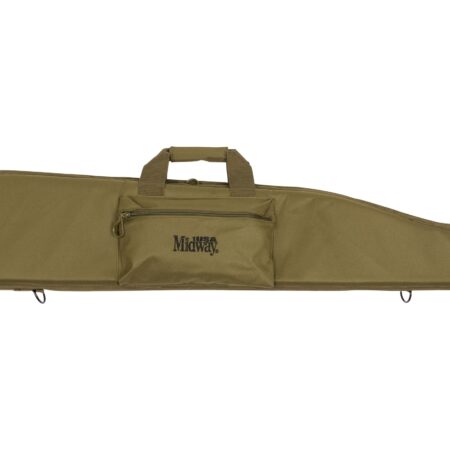 Buy from MidwayUSAMORE INFO
Buy from MidwayUSAMORE INFOMidwayUSA Heavy Duty Scoped Rifle Case
The MidwayUSA Scoped Rifle Case is a heavy-duty solution for anyone looking for a rifle case. These cases have been engineered with an internal, adjustable retention strap to provide exceptional protection for rifles. These cases are constructed with an advanced dual density bonded padding system that provides superior impact protection compared to basic foam used in other cases. The heavy duty padding is over 1″ thick on both sides to protect your rifle and optics investment from rough handling in storage or travel. Other enhanced durability features include heavy duty, 400D high-abrasion resistant ballistic fabric construction, and oversized self repairing coil zippers with sewn pull tabs. Lay flat construction allows this case to stay open on the shooting bench for ease removing your rifle, or as a padded surface to lay the gun on during breaks in the action. The fully wrapped webbing handles, reinforced seam stitching, metal hardware, adjustable shoulder strap and snag-proof lining fabric make the MidwayUSA Scoped Rifle Case an excellent choice for transporting your sporting rifles.
-
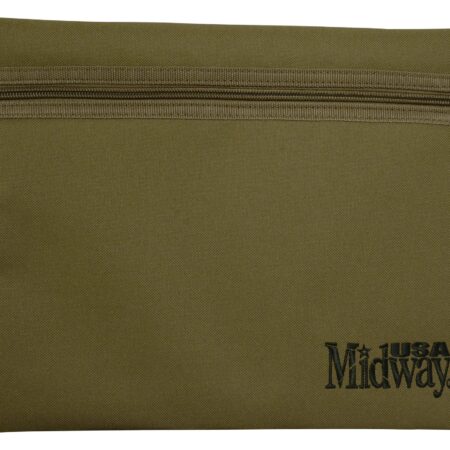 Buy from MidwayUSAMORE INFO
Buy from MidwayUSAMORE INFOMidwayUSA Range Bag Pistol Case
Measuring 13.5″ x 10″, this case fits a variety of handguns. Constructed of durable 400D PVC coated polyester and a heavy duty zipper, this case can be used as a stand alone gun case, incorporated into your current range bag, or as part of your MidwayUSA Competition Range Bag System.
-
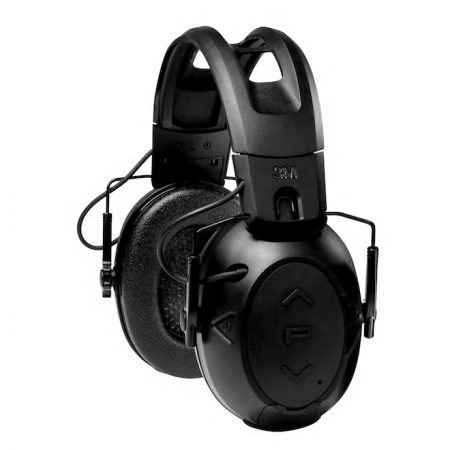 Buy from MidwayUSAMORE INFO
Buy from MidwayUSAMORE INFOPeltor Sport Tactical 300 Electronic Earmuffs
Targeted NRR of 24 dBA for passive sound protection. Suppresses gunshot noise and amplifies low sounds using proprietary 3M technologies. Gunshot Recognition and Suppression Technology optimizes noise protection based on the firearm being used and the environment in which it’s being used. Clear Voice Tracking Technology seeks voice amongst the noise to improve speech intelligibility and situational awareness. Engineered for optimal fit and comfort. Foldable and adjustable.
-
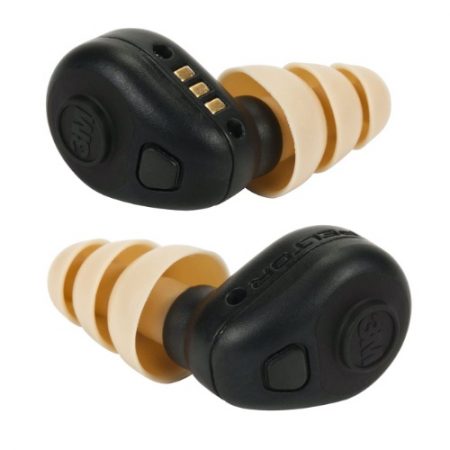
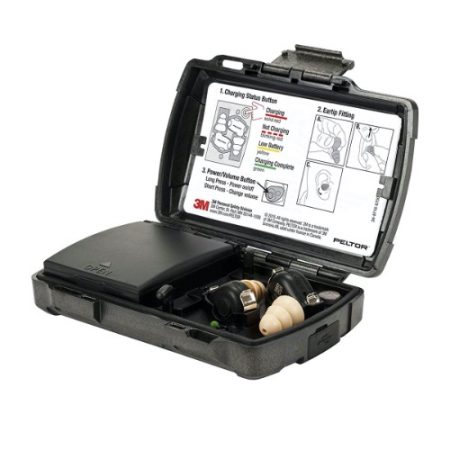 Buy from AmazonMORE INFO
Buy from AmazonMORE INFOPeltor TEP-200 Tactical Earplug
The 3M PELTOR Tactical Earplug helps protect your hearing and can help improve situational awareness and communications in challenging environments. Integrated with advanced level dependent technology, the TEP 200 helps provide hearing protection in noise and situational awareness in quiet environments. Protecting hearing and improving situational awareness may help increase personal safety and may improve productivity.
NOTE: the link associated with the “Buy from Amazon” button below is an “affiliate” link; clicking through and buying this product will earn Revere’s Riders a small commission on the sale. This income helps to support our firearms training programs going forward.
-
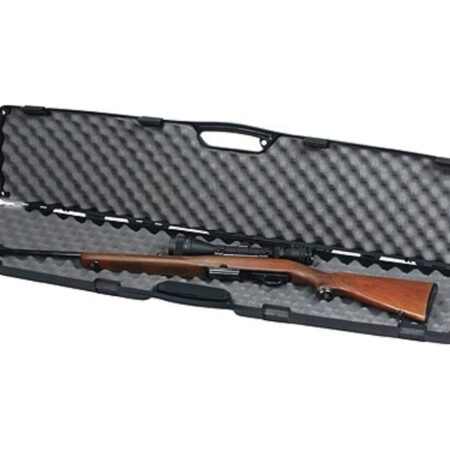 Buy from MidwayUSAMORE INFO
Buy from MidwayUSAMORE INFOPlano Gun Guard SE Scoped Rifle Case
With a rugged look and solid protection for beginner and experienced sportsmen alike, the SE Series Single Scoped Rifle Case safely carries a single rifle with a high-mount 50mm scope. The rifle has double the protection thanks to contoured recessed latches and a strong, rigid ribbed construction. Padlock tabs offer added security.
-
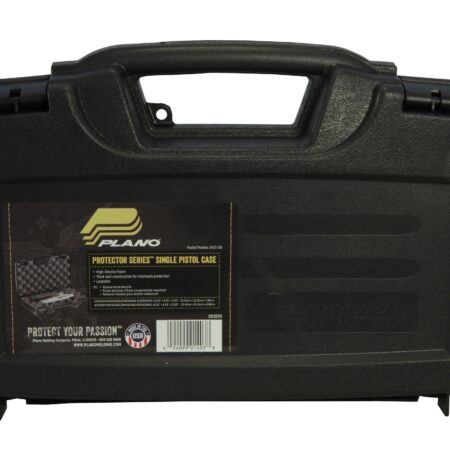 Buy from MidwayUSAMORE INFO
Buy from MidwayUSAMORE INFOPlano Protector Single Pistol Case
Featuring thick-wall construction, molded-in handles secure latches and padlock tabs for secure storage this Plano case holds a single pistol with room for accessories. The Protector Series of cases offer one of the best value to price relationships available.
-
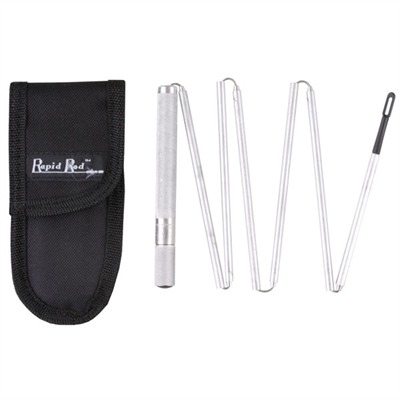 Buy From AtskoMORE INFO
Buy From AtskoMORE INFORapid Rod Cleaning Rod
Rapid-Rod will keep your barrel clear and safe. Obstructions such as mud, snow, dirt, ice, shotgun wadding, shell casings, or a bullet can and do get lodged in chambers and barrels. This dangerous and frustrating situation renders your weapon useless until cleared.
-
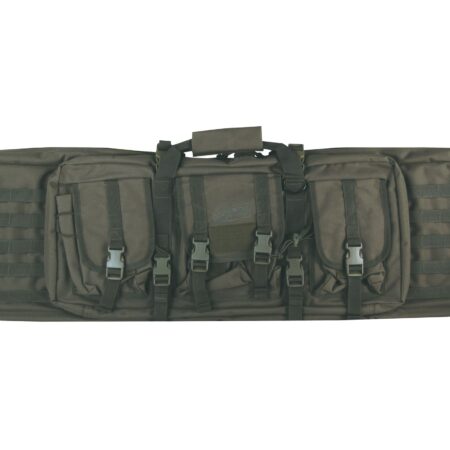 Buy from MidwayUSAMORE INFO
Buy from MidwayUSAMORE INFOVoodoo Tactical Padded Weapons Rifle Case
Whether you are carrying your rifles to the range or need to pack them in the field, this Voodoo Tactical brand padded weapons case is a terrific way to carry one or two long guns and a great deal of related gear. With a padded separator, your guns will remain safe. This gun case features three carrying methods: A standard handle in center of the bag, a shoulder strap, and back-pack style shoulder harness. This backpack style carry is great for long distances. And if you use the PAL webbing to attach MOLLE or ALICE pouches, you can haul even more gear.
-
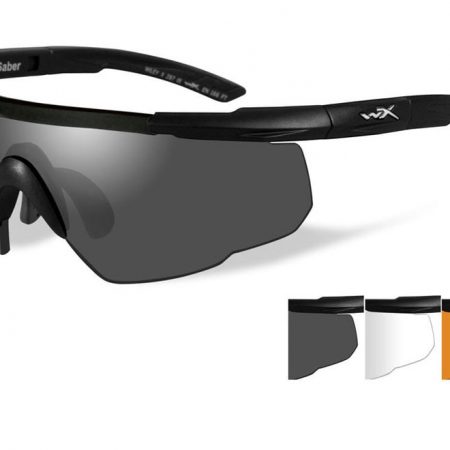 Buy from MidwayUSAMORE INFO
Buy from MidwayUSAMORE INFOWiley X Saber Series Shooting Glasses
Wiley-X Saber Advanced shooting glasses feature maximum eye protection with a one-piece, wraparound design. The padded nosepiece combines with patented temple adjustments for a secure, comfortable fit. Part of the Wiley-X Tactical line, Saber Advanced glasses meet the MIL-PRF-32432(GL) Ballistic Standards. ANSI Z87.1-2010 High Velocity and Mass Impact Standards, and EN 166 FT at High Speed at Temperature Extremes Standards, and US Federal OSHA 1910.133(b)(1)(i) Standards. Offer superb UV protection and optical clarity.
Rifle 125 (Basic Rifle)
Most important is to bring a safe and functional rifle. If you haven’t cleaned your rifle, setting aside time before the event to clean it would be a good idea. If you have doubts about the safety of your rifle, now would be a good time to have it looked over by a qualified gunsmith or armorer.
- Rifle Type: Any action type will do, but a magazine-fed semiautomatic rifle will be least frustrating for most shooters.
- Caliber: Most basic rifle events are primarily conducted at reduced ranges from 25 to 100 yards. A .22 LR caliber rifle is ideal for these events as it is much less expensive to shoot.
- Magazines: If using a magazine-fed rifle, bring at least two magazines (four is suggested).
- Sights/Optics: Any sights will do, but a basic practical optic of ~4x power or aperture-style iron sights will optimize your experience. For iron sights, many students enjoy Tech Sights as a good upgrade to the basic Ruger 10/22.
- Slings: The rifle should have a sling; a USGI web sling is best but any two point sling is fine.
- Mat: Bring a mat or pad to lie on. We will spend a lot of time in the prone position.
Recommended Rifle 125 Equipment
Below is a list of equipment that our instructors have found to be functional, durable and useful:
-
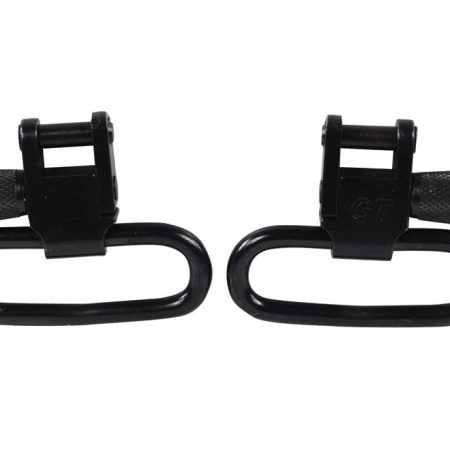 Buy from MidwayUSAMORE INFO
Buy from MidwayUSAMORE INFOGrovTec Locking Sling Swivels
The GrovTec Locking Sling Swivels feature a all-steel construction and a premium finish. These GrovTec Locking Sling Swivels have multiple locking points and ergonomic steel thumbscrews.
IMPORTANT: if you are buying these for use with a US GI sling, you MUST get the wider 1 ¼” version of the sling swivel. The 1″ version is too narrow to fit a US GI sling.
-
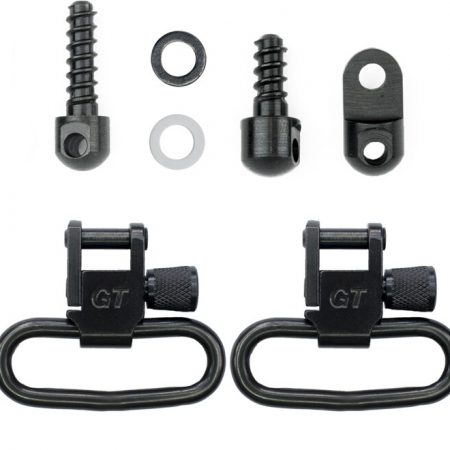 Buy from MidwayUSAMORE INFO
Buy from MidwayUSAMORE INFOGrovTech 1 ¼” Ruger 10/22 Sling Swivel Set
The GrovTec 1 ¼” Swivel is packaged to fit the Ruger 10/22. ½” wood screw suitable for fore end stock mounting is also included. Includes 3/4″ rear wood screw swivel stud with spacers and two locking sling swivels.
NOTE: this is all you need to mount a US GI sling to your Ruger 10/22 if it did not come with sling studs from the factory.
-
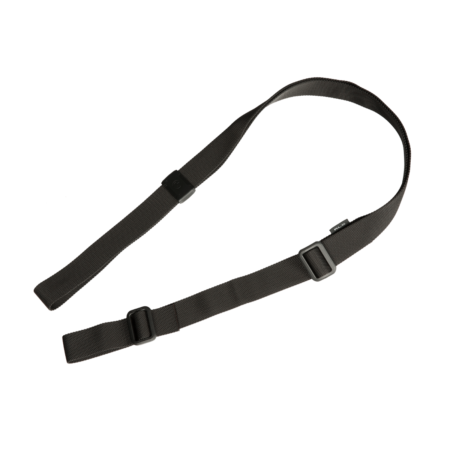 Buy From MidwayUSAMORE INFO
Buy From MidwayUSAMORE INFOMagpul RLS 2-Point Sling
Features:
- Dedicated two-point sling with shooting support functions for practical field employment
- Magpul’s proprietary weave 1-1/4” wide nylon webbing material for strength and wear resistance
- Low-profile, lightweight and durable fasteners and hardware made from Magpul polymer
- Compatible with Magpul sling adapters and accessories, or any other 1.25” sling attachments (sold separately)
- Colored webbing has Near Infrared (NIR) treatment to reduce IR signature
-
 Buy from MidwayUSAMORE INFO
Buy from MidwayUSAMORE INFOMidwayUSA Heavy Duty Scoped Rifle Case
The MidwayUSA Scoped Rifle Case is a heavy-duty solution for anyone looking for a rifle case. These cases have been engineered with an internal, adjustable retention strap to provide exceptional protection for rifles. These cases are constructed with an advanced dual density bonded padding system that provides superior impact protection compared to basic foam used in other cases. The heavy duty padding is over 1″ thick on both sides to protect your rifle and optics investment from rough handling in storage or travel. Other enhanced durability features include heavy duty, 400D high-abrasion resistant ballistic fabric construction, and oversized self repairing coil zippers with sewn pull tabs. Lay flat construction allows this case to stay open on the shooting bench for ease removing your rifle, or as a padded surface to lay the gun on during breaks in the action. The fully wrapped webbing handles, reinforced seam stitching, metal hardware, adjustable shoulder strap and snag-proof lining fabric make the MidwayUSA Scoped Rifle Case an excellent choice for transporting your sporting rifles.
-
 Buy from MidwayUSAMORE INFO
Buy from MidwayUSAMORE INFOPlano Gun Guard SE Scoped Rifle Case
With a rugged look and solid protection for beginner and experienced sportsmen alike, the SE Series Single Scoped Rifle Case safely carries a single rifle with a high-mount 50mm scope. The rifle has double the protection thanks to contoured recessed latches and a strong, rigid ribbed construction. Padlock tabs offer added security.
-
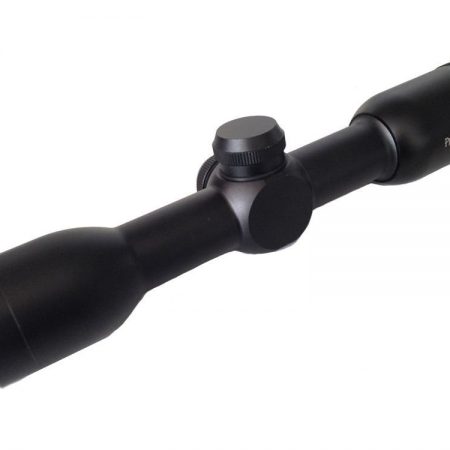
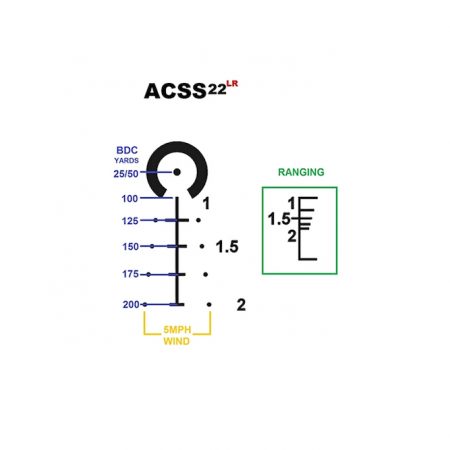 Buy from Primary ArmsMORE INFO
Buy from Primary ArmsMORE INFOPrimary Arms 6x32mm Rifle Scope w/ ACSS .22LR BDC Reticle
Introducing the Primary Arms ® 6X Scope with the Patented ACSS® 22LR Reticle (Advanced Combined Sighting System) is a giant leap forward in reticle design that utilizes bullet drop compensation correlated with range estimation and wind holds in one simple system.
-
 Buy From AtskoMORE INFO
Buy From AtskoMORE INFORapid Rod Cleaning Rod
Rapid-Rod will keep your barrel clear and safe. Obstructions such as mud, snow, dirt, ice, shotgun wadding, shell casings, or a bullet can and do get lodged in chambers and barrels. This dangerous and frustrating situation renders your weapon useless until cleared.
-
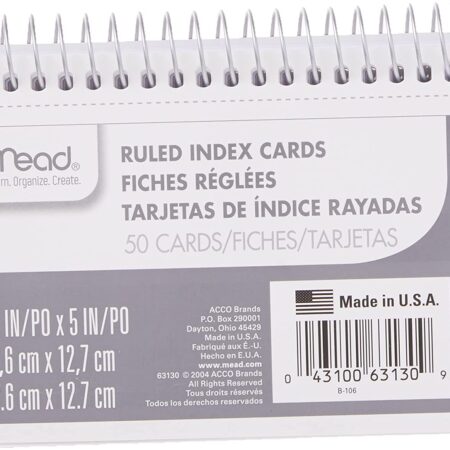 Buy from AmazonMORE INFO
Buy from AmazonMORE INFOSpiral Bound Index Cards
Spiral bound index cards are a great low-cost solution for a range notebook. Multiple sizes are available so you can choose the size that best fits your needs. These are usually available at any store that stocks office and/or school supplies as well as Amazon.
NOTE: the link associated with the “Buy from Amazon” button below is an “affiliate” link; clicking through and buying this product will earn Revere’s Riders a small commission on the sale. This income helps to support our firearms training programs going forward.
-
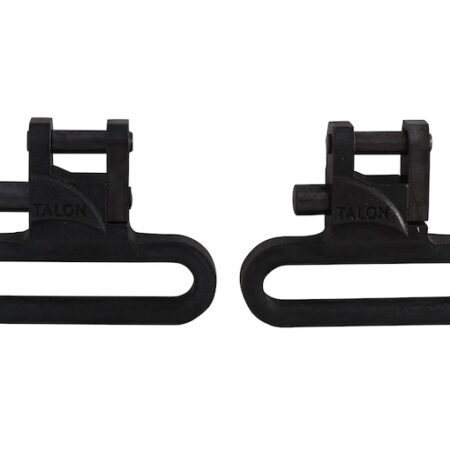 Buy from MidwayUSAMORE INFO
Buy from MidwayUSAMORE INFOThe Outdoor Connection Talon Sling Swivels
Talon sling swivels feature all-metal construction with stainless steel springs. Machine finished, these swivels are extremely quiet in the field. Attach them to any standard swivel base. Features a Guaranteed Forever warranty. Prevents swivel from touching firearm when sling is properly connected. Quick release feature for easy mounting or removal.
IMPORTANT: if you are buying these for use with a US GI sling, you MUST get the wider 1 ¼” version of the sling swivel. The 1″ version is too narrow to fit a US GI sling.
-
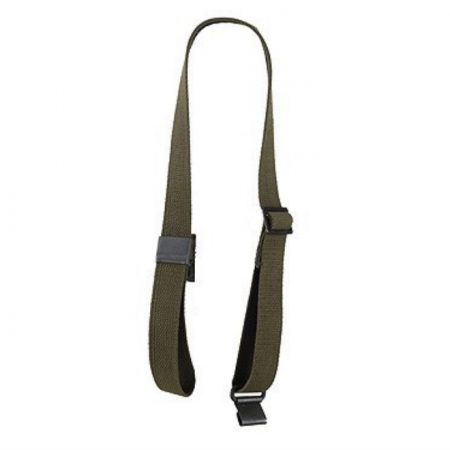 Buy from CMPMORE INFO
Buy from CMPMORE INFOUSGI Rifle Sling, OD Green
This sling is a correct representation of the military sling for the M1 Garand rifle. It is fully adjustable, 1-1/4″ cotton webbing. Made in U.S.A. Sling is approximately 48″ long from the Sling hook to the end of the ball tip. 52″ of canvas fully extended before the hardware is sewn on.
-
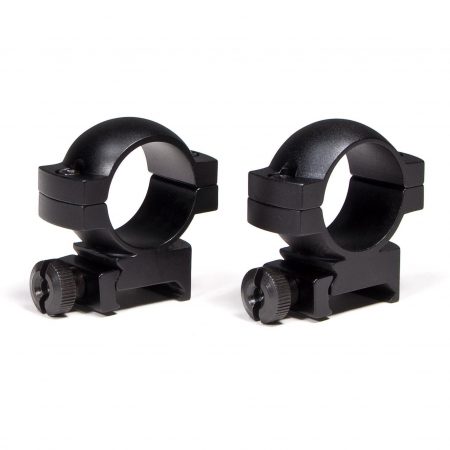 Buy from A&A OpticsMORE INFO
Buy from A&A OpticsMORE INFOVortex Optics 1 Inch Riflescope Medium Rings, Picatinny/Weaver Mount, Set of 2
For maximum strength these Vortex 1-inch Riflescope Rings (Set of 2) are manufactured with aircraft-grade 6061-T6 aluminum. Vortex 1-inch Riflescope Rings will mount on any Picatinny or Weaver type rails.
-
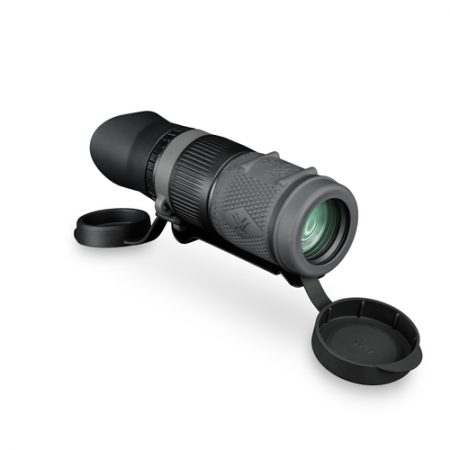 Buy from A&A OpticsMORE INFO
Buy from A&A OpticsMORE INFOVortex RECCE Pro 8x32mm Monocular
With an integral carry clip for quick external access, the RECCE Pro weighs in at 11 ounces. Featuring XR fully multi-coated lenses and HD glass, Argon gas-purging, o-ring-seals, and ArmorTek coatings, the RECCE Pro is fully water and weather proof and can be used anywhere, any time, and any place.
Pistol 100 (Basic Pistol)
Most important is to bring a safe and functional pistol. If you haven’t cleaned your pistol, setting aside time before the event to clean it would be a good idea. If you have doubts about the safety of your pistol, now would be a good time to have it looked over by a qualified gunsmith or armorer. Please note that you should leave any pistol that is not “drop safe” at home (see below).
- Pistol Type: We suggest a full-size service or target pistol. Examples include a Ruger Mark IV target pistol, a S&W M&P full size, a Glock 17, a 1911, or a Ruger GP-100 model. There are many more service and target pistols available — the previous list is just a short set of common examples. That said, if you want to learn to shoot your compact pistol better then we will teach you on the platform you bring.
- Caliber: Any caliber (rimfire or centerfire, .22LR to .45 ACP) will do. However, those new to pistol shooting will likely benefit from beginning with a pistol chambered for .22LR due to the reduced recoil.
- Magazines: If you have a magazine fed pistol, at least two magazines will be helpful.
- Holsters: Basic pistol events will not require a holster. We run a cold range and will not be drawing from the holster in the basic class. Of course, you may bring a holster to use for wearing your sidearm before and after the event.
- Drop safe pistol: Older single-action pistols manufactured before the 1980s and lacking a transfer bar safety are the most common type of pistol that lack drop safe design features, as do some military surplus imports from Eastern bloc countries, Taurus PT-series pistols not fixed during an international safety recall in 2015, Walther CCP series pistols not fixed during a safety recall in 2017, Sig P320 pistols not fixed during a safety upgrade in 2017, and Canik pistols not fixed during a Severe Duty Upgrade in 2017. These pistols may discharge if dropped and pose a potential safety hazard to our volunteers and students and are not permitted. If you have concerns about the safety features of your pistol you should have it inspected by an armorer or gunsmith before the event.
Recommended Pistol 100 Equipment
Below is a list of equipment that our instructors have found to be functional, durable and useful:
-
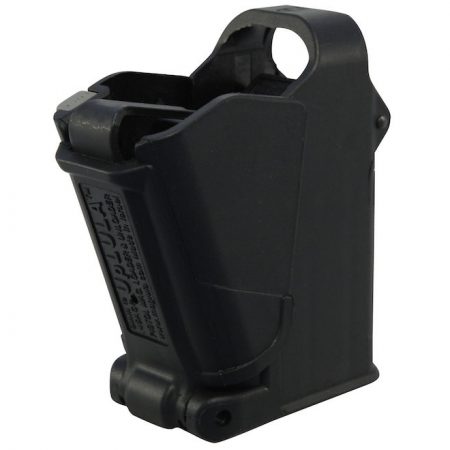 Buy from MidwayUSAMORE INFO
Buy from MidwayUSAMORE INFOMaglula UpLULA Pistol Magazine Loader
The UpLULA is a military-grade, pocket-size, universal pistol magazine loader and unloader designed to load and unload virtually all 9mm Luger up to .45ACP single and double stack magazines of all manufacturers. It also loads most .380ACP single and double-stack mags, and 1911’s mags. The UpLULA loader does it all easily, reliably, and painlessly!
-
 Buy from MidwayUSAMORE INFO
Buy from MidwayUSAMORE INFOMidwayUSA Range Bag Pistol Case
Measuring 13.5″ x 10″, this case fits a variety of handguns. Constructed of durable 400D PVC coated polyester and a heavy duty zipper, this case can be used as a stand alone gun case, incorporated into your current range bag, or as part of your MidwayUSA Competition Range Bag System.
-
 Buy from MidwayUSAMORE INFO
Buy from MidwayUSAMORE INFOPlano Protector Single Pistol Case
Featuring thick-wall construction, molded-in handles secure latches and padlock tabs for secure storage this Plano case holds a single pistol with room for accessories. The Protector Series of cases offer one of the best value to price relationships available.
Rifle 223 (Carbine)
Most important is to bring a safe and functional rifle. If you haven’t cleaned your rifle, setting aside time before the event to clean it would be a good idea. If you have doubts about the safety of your rifle, now would be a good time to have it looked over by a qualified gunsmith or armorer.
- AR-15: The default assumption is that students will bring an AR-15 style carbine. If you bring a different type of carbine or rifle please coordinate with the event director. If ammunition cost prohibits you from attending, most learning can be accomplished on a rimfire trainer but there may be some activities not well suited to rimfire. A shorter, lighter barrel configuration is most suitable (such as a 16″ A2 or pencil profile barrel) but a wide variety of rifle configurations are viable.
- Sights/Optics: Ideal sights are GI-style iron aperture sights, a red dot optic (such as an AimPoint), a low-powered fixed optic of no more than 4X power (such as an ACOG), or a variable power optic of 1–4x or 1–6x power.
- Sling: The carbine should have a two point sling. A USGI web sling is ok, but you may prefer a sling with adjustable length such as the VTAC 2-Point adjustable sling.
- Magazines & Gear: Students should bring at least four magazines (six are preferred). Students should be able to carry at least one magazine in a quick, accessible manner: pants with an appropriate pocket on the support side, a magazine pouch, or a belt magazine carrier are fine. Additional magazines should be able to be carried in pockets or pouches. If you use duty gear (chest rig, load bearing belt, etc) for work or competition bring your normal gear. Instructors may have some loaner gear for carrying magazines.
- Be Ready to Move: The firing line will move back and forth as you shoot at different ranges from 7 to 100 yards. We will revisit the gear line periodically between drills to grab fresh ammunition and hydrate but you may want to have a few comfort items in your pockets (snacks, chap stick, etc) in addition to your magazines and ammunition as described above.
- Mat or Knee/Elbow Pads: We may be spending some time in the prone position and you may want to bring a shooting mat or knee/elbow pads for comfort.
Recommended Rifle 223 Equipment
Below is a list of equipment that our instructors have found to be functional, durable and useful:
-
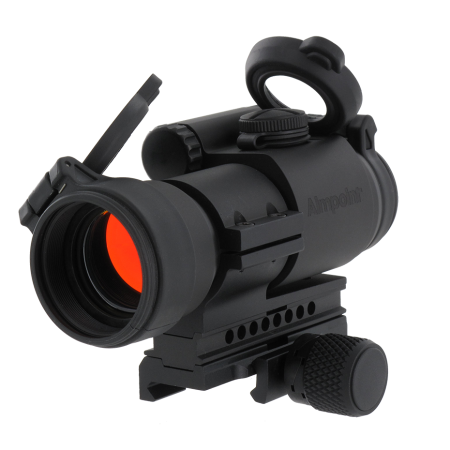 Buy from MidwayUSAMORE INFO
Buy from MidwayUSAMORE INFOAimpoint PRO Patrol Rifle Optic
Designed with input from a distinguished group of current and former professionals, the Patrol Rifle Optic incorporates many never before seen features to maximize this sight’s performance within the challenging conditions faced by modern law enforcement.
-
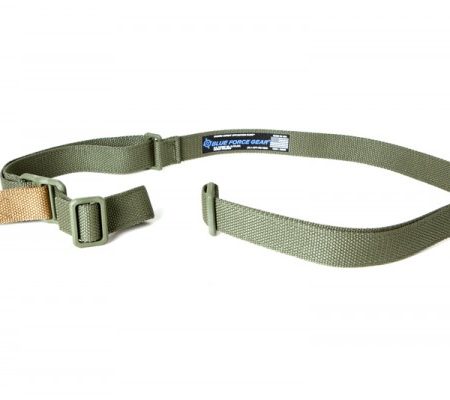 Buy from MidwayUSAMORE INFO
Buy from MidwayUSAMORE INFOBlue Force Gear Vickers Combat Sling
The Patent Pending Vickers Combat Applications Sling™ has revolutionized the way we carry automatic rifles. Developed with industry friend, firearms expert, and former 1st SFOD- Delta operational member Larry Vickers, the Vickers Combat Applications Sling™ incorporates key features from real world experience that makes the sling effective and durable – the choice sling requested by name. The Vickers Combat Applications SlingSling™ has been our most popular product of all with service in every branch of service here at home as well as several foreign militaries.
-
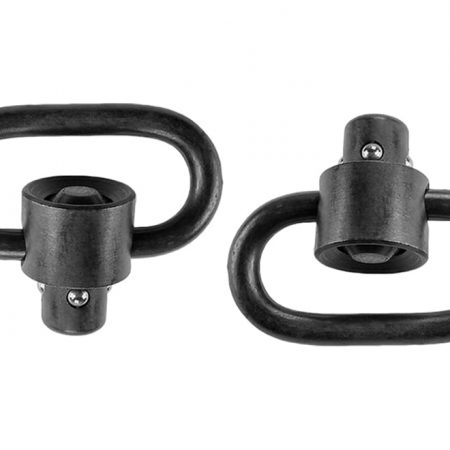 Buy from MidwayUSAMORE INFO
Buy from MidwayUSAMORE INFOGrovTec Low Profile Heavy Duty Push Button Quick Detach Sling Swivel
This GrovTech Quick Detach Sling Swivel features a 1.25″ Loop for compatibility with a wide variety of sling types and is quickly and easily installed or removed from a QD Sling Socket via its low profile (recessed) push button. The QDS swivel is constructed of Stainless Steel for strength and durability.
-
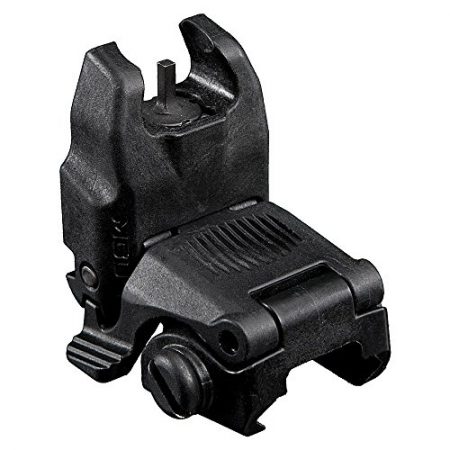 Buy from MidwayUSAMORE INFO
Buy from MidwayUSAMORE INFOMagpul MBUS Front Flip Sight GenII
The MBUS (Magpul® Back-Up Sight) is a low-cost, color injection molded, folding back-up sight. The MBUS Front Sight is adjustable for elevation and fits most 1913 Picatinny-railed hand guards, but is specifically tailored to the AR15/M16 platform.
-
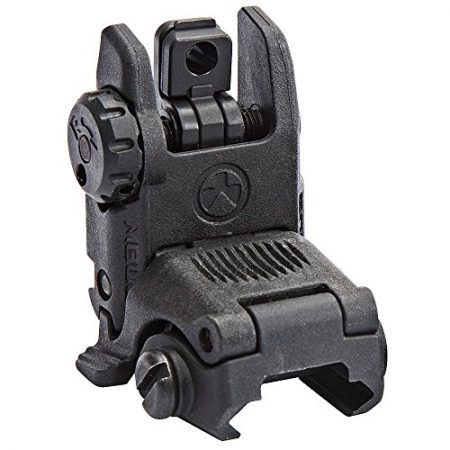 Buy from MidwayUSAMORE INFO
Buy from MidwayUSAMORE INFOMagpul MBUS Rear Flip Sight GenII
The MBUS (Magpul® Back-Up Sight) is a low-cost, color injection molded, folding back-up sight. The dual aperture MBUS Rear Sight is adjustable for windage and fits most 1913 Picatinny rail equipped weapons, but is specifically tailored to the AR15/M16 platform.
-
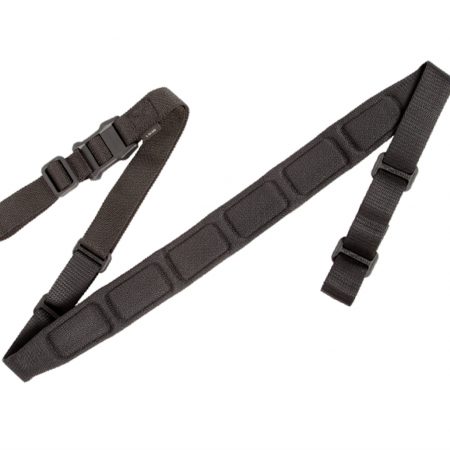 Buy from MidwayUSAMORE INFO
Buy from MidwayUSAMORE INFOMagPul MS1 Padded Sling
The MS1 Padded Sling is an optimized, dedicated two-point sling that serves equally well in a one-point role when using optional adapters. Built around our MS1 slider, this system provides rapid adjustments to either lengthen or shorten the sling with no slipping once set, and no tails, loops, or other potential snag hazards. In a two-point role, the MS1 allows easy shoulder transitions, rapid adjustability for hands free rifle carry and shooting support from various positions. The MS1 system also has a series of adapters that are sold separately and based on the MS3® and MS4™ slings. By adding the appropriate adapter (available with Paraclip™ or QD Sling Swivel) for the sling, you can easily add one-point functionality to your MS1.
-
 Buy From AtskoMORE INFO
Buy From AtskoMORE INFORapid Rod Cleaning Rod
Rapid-Rod will keep your barrel clear and safe. Obstructions such as mud, snow, dirt, ice, shotgun wadding, shell casings, or a bullet can and do get lodged in chambers and barrels. This dangerous and frustrating situation renders your weapon useless until cleared.
-
 Buy from AmazonMORE INFO
Buy from AmazonMORE INFOSpiral Bound Index Cards
Spiral bound index cards are a great low-cost solution for a range notebook. Multiple sizes are available so you can choose the size that best fits your needs. These are usually available at any store that stocks office and/or school supplies as well as Amazon.
NOTE: the link associated with the “Buy from Amazon” button below is an “affiliate” link; clicking through and buying this product will earn Revere’s Riders a small commission on the sale. This income helps to support our firearms training programs going forward.
-
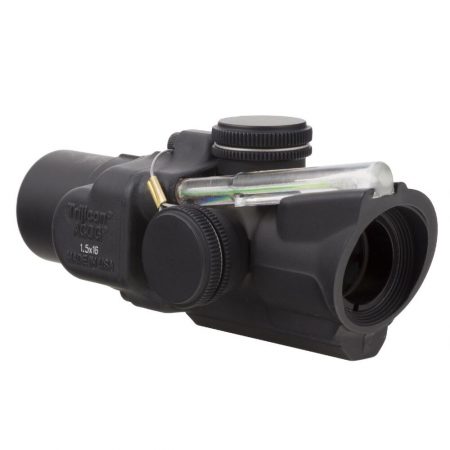
 Buy from Optics PlanetMORE INFO
Buy from Optics PlanetMORE INFOTrijicon ACOG TA44 1.5x16mm
Wrapped in a smaller package, at 4.9 ounces, this ACOG is perfect for fast-moving tactical teams operating in close quarters or for speed-oriented competition venues. This very compact model provides weapons like the M16/M4 with excellent fire control capability. Targets are easier and quicker to acquire through the 1.5×16 models because of the larger field of view (7.4 degrees) and eye-friendly design.
-
 Buy from CMPMORE INFO
Buy from CMPMORE INFOUSGI Rifle Sling, OD Green
This sling is a correct representation of the military sling for the M1 Garand rifle. It is fully adjustable, 1-1/4″ cotton webbing. Made in U.S.A. Sling is approximately 48″ long from the Sling hook to the end of the ball tip. 52″ of canvas fully extended before the hardware is sewn on.
-
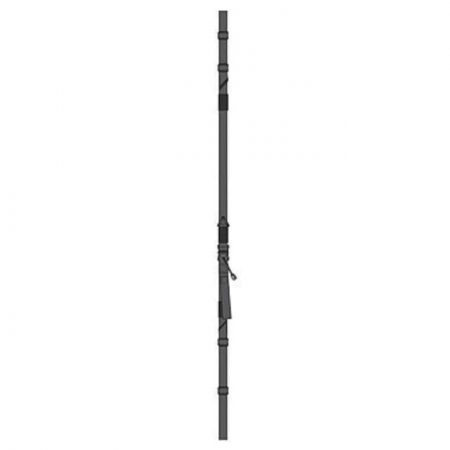 Buy from MidwayUSAMORE INFO
Buy from MidwayUSAMORE INFOViking Tactics VTAC Original 2-Point Sling
The Original 2 Point Sling features a revolutionary design that has made it a favorite of the Special Forces community. Created for a collapsible stock (AR-15 type rifles), the Viking Tactics Original 2 Point Sling is quick, versatile, dynamic, and most importantly, simple.
Viking Tactics, Inc. understand the importance of flexibility and this product truly delivers in this aspect. The Original 2 Point Sling is instantly adjustable, allowing you to adjust shooting positions with ease. You can easily move from strong side shoulder to weak side shoulder or secure your carbine during handgun transition. -
 Buy from MidwayUSAMORE INFO
Buy from MidwayUSAMORE INFOVoodoo Tactical Padded Weapons Rifle Case
Whether you are carrying your rifles to the range or need to pack them in the field, this Voodoo Tactical brand padded weapons case is a terrific way to carry one or two long guns and a great deal of related gear. With a padded separator, your guns will remain safe. This gun case features three carrying methods: A standard handle in center of the bag, a shoulder strap, and back-pack style shoulder harness. This backpack style carry is great for long distances. And if you use the PAL webbing to attach MOLLE or ALICE pouches, you can haul even more gear.
-
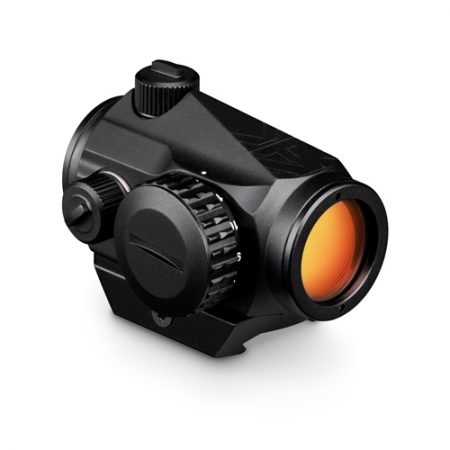
 Buy from A&A OpticsMORE INFO
Buy from A&A OpticsMORE INFOVortex Crossfire Red Dot
For close-in work and general shooting, it’s tough to beat a quality Red Dot Sight. The super-light, ultracompact, insanely-fast-on-target, incredibly durable, Crossfire Red Dot is exactly that. Not only does this sight absolutely rock, it does so at a price that’s hotter than a $ 2 pistol.
-
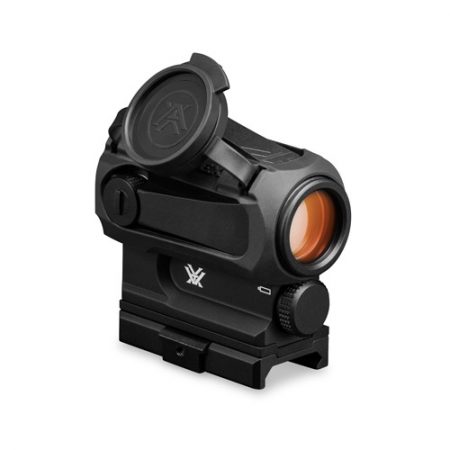
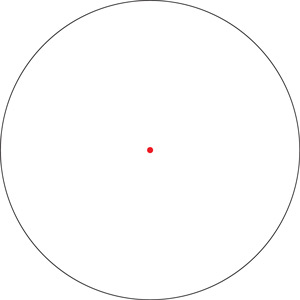 Buy from A&A OpticsMORE INFO
Buy from A&A OpticsMORE INFOVortex Sparc AR Red Dot
Simple—Fast—Effective—Point and Shoot. When you boil it down, those are the advantages of a red dot sight. And that’s what the SPARC AR delivers – all in a durable, lightweight, compact, and ultra-clean package. Digital rear-facing controls for power and dot brightness offer quick access and are viewable from the shooting position. 2 MOA dot diameter promotes precise point of aim. Automatically returns to last dot intensity used when powered up.
-
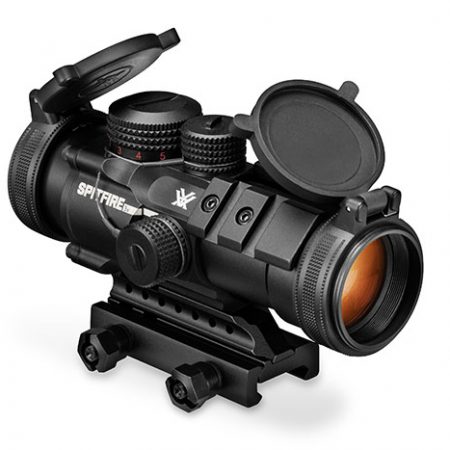
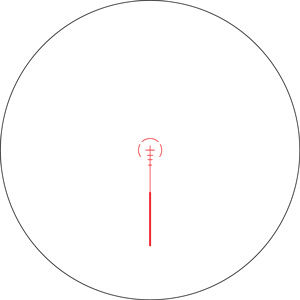 Buy from A&A OpticsMORE INFO
Buy from A&A OpticsMORE INFOVortex Spitfire 3x Prism Scope
Designed specifically for the AR platform, the 3x Spitfire™ combines an impressive array of high-performance features into a rugged, ultra-compact package. When fast target acquisition in close- to medium-range shooting applications is a priority, the Spitfire excels.
-
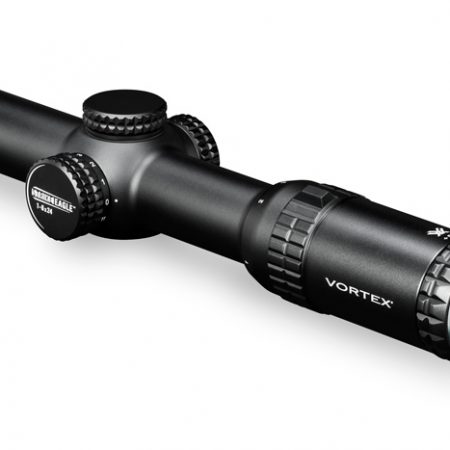
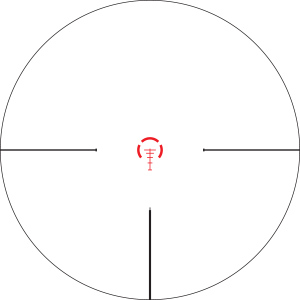 Buy from A&A OpticsMORE INFO
Buy from A&A OpticsMORE INFOVortex Strike Eagle 1-6×24 Riflescope
Speed and versatility—that’s what 1x variable optics offer AR shooters who need to engage targets from point-blank out to extended ranges. And that’s exactly what you’re going to get with Vortex’s new Strike Eagle 1-6 x 24. Take into consideration what it costs to get into this optic, and you may find you can’t afford not to buy it.
Pistol 145 (Intro to Defensive Pistol)
Most important is to bring a safe and functional pistol. If you haven’t cleaned your pistol, setting aside time before the event to clean it would be a good idea. If you have doubts about the safety of your pistol, now would be a good time to have it looked over by a qualified gunsmith or armorer. Please note that you should leave any pistol that is not “drop safe” at home (see below).
- Pistol Type: We suggest you bring the pistol you intend to conceal carry.
- Caliber: Since this course is geared towards those that will conceal carry their pistol, a pistol chambered in a center-fire caliber is highly recommended. Generally, this means 9x19mm, .40 S&W, .45 ACP or similar; you can get by with .380 ACP but many consider this caliber to be borderline effective.
- Magazines: A minimum of two magazines are necessary to participate in our defensive pistol courses without having to resort to reloading of magazines during a drill. More magazines are better; especially if you have a “low capacity” pistol that utilizes magazines that hold less than 10 rounds.
- Holsters: You will need a quality holster (either IWB or OWB; appendix, small-of-the-back, shoulder and other holsters are not permitted) that FITS YOUR PISTOL. Your holster should completely cover the trigger guard to prevent an unintentional discharge while your pistol is holstered. Retention holsters are not recommended as they add extra complexity to the draw stroke that is really more appropriate in more advanced courses.
- Magazine Carriers: You will want a comfortable method of carrying extra magazines on your person. Generally, this means a carrier designed for 1-2 magazines that is positioned on your weak side opposite your holster. In a pinch, you can get by with carrying extra magazines in a pocket.
- Drop safe pistol: Older single-action pistols manufactured before the 1980s and lacking a transfer bar safety are the most common type of pistol that lack drop safe design features, as do some military surplus imports from Eastern bloc countries, Taurus PT-series pistols not fixed during an international safety recall in 2015, Walther CCP series pistols not fixed during a safety recall in 2017, Sig P320 pistols not fixed during a safety upgrade in 2017, and Canik pistols not fixed during a Severe Duty Upgrade in 2017. These pistols may discharge if dropped and pose a potential safety hazard to our volunteers and students and are not permitted. If you have concerns about the safety features of your pistol you should have it inspected by an armorer or gunsmith before the event.
Recommended Pistol 145 Equipment
Below is a list of equipment that our instructors have found to be functional, durable and useful:
-
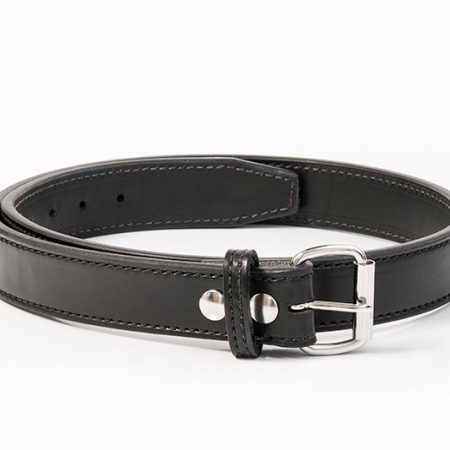 Buy from Bigfoot Gun BeltsMORE INFO
Buy from Bigfoot Gun BeltsMORE INFOBigfoot Gun Belts 14oz Leather Gun Belt
Bigfoot Gun Belts feature the following:
- Spring Steel Core—strengthened by a spring steel core, a Bigfoot belt provides the maximum vertical and horizontal hold once in place, but doesn’t ever take a permanent crimp.
- English Bridle Leather—English Bridle Leather is a type of full-grain leather, the highest quality leather there is. Full-grain leathers are the top-most layers of hide, making them quite strong, yet supple. Bridle leathers are made by treating full-grain leather with natural tannins, oils and preservatives, rendering a matte-like finish and subtle texture. The result is a piece of leather that will break in overtime but never lose strength.
- Heavy Duty Thread—Tex 270 is a heavy-duty bonded nylon thread that, like bridle leather, is heavy-duty and high-quality. This type of thread is usually reserved for industrial or other heavy applications.
- Corrosion-Resistant Hardware—we use steel roller buckles, available in flat black or standard steel colors, in order to ensure a lifetime of function and durability. The roller buckle allows you to smoothly insert the gun belt when putting it on. To anchor the belt buckle, we employ heavy-duty directional snap fasteners, which hold more strongly than universal snaps.
- Triple Edge Finishing—Bigfoot’s craftsmen painstakingly finish the edges when the belt is stitched together. The edges are beveled, and the top is burnished, which softens the belt’s edges. Then, the edges are painted along the entire edge of the belt, giving it a uniform appearance.
- Double Layered Leather—Dual layers of leather provide strength for a lifetime of wear, but the smooth surface makes guiding through belt loops a breeze.
-
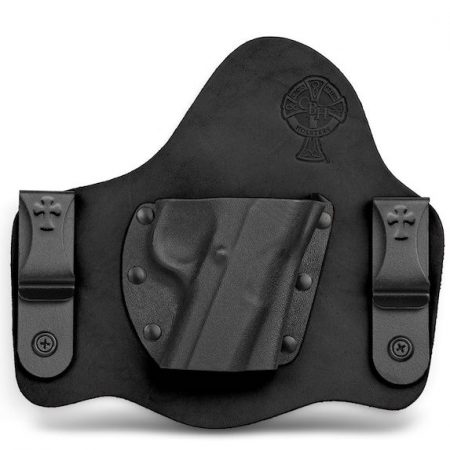 Buy from CrossbreedMORE INFO
Buy from CrossbreedMORE INFOCrossbreed SuperTuck IWB Holster
The revolutionary CrossBreed® SuperTuck® is the most comfortable and concealable inside the waistband (IWB) holster you’ll ever wear. Designed exclusively and patented by CrossBreed® Holsters, the flagship SuperTuck Deluxe® is hand molded to fit each specific firearm listed. It features a premium leather backing with a molded and mounted Kydex pocket. Versatile for carry options, the SuperTuck may be worn comfortably with or without your shirt tucked in – based on your personal carry style. The SuperTuck is designed to be carried towards the rear of your draw side – 3:30 to 5 o’clock for a right-hand draw or 7 to 8:30 for a left-hand draw.
-
 Buy from MidwayUSAMORE INFO
Buy from MidwayUSAMORE INFOMidwayUSA Range Bag Pistol Case
Measuring 13.5″ x 10″, this case fits a variety of handguns. Constructed of durable 400D PVC coated polyester and a heavy duty zipper, this case can be used as a stand alone gun case, incorporated into your current range bag, or as part of your MidwayUSA Competition Range Bag System.
-
 Buy from MidwayUSAMORE INFO
Buy from MidwayUSAMORE INFOPlano Protector Single Pistol Case
Featuring thick-wall construction, molded-in handles secure latches and padlock tabs for secure storage this Plano case holds a single pistol with room for accessories. The Protector Series of cases offer one of the best value to price relationships available.
-
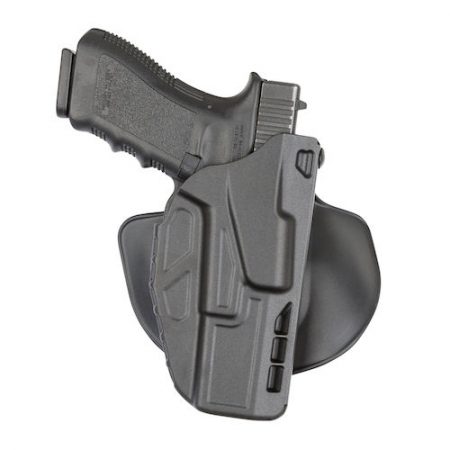 Buy from SafarilandMORE INFO
Buy from SafarilandMORE INFOSafariland ALS Holsters
The AUTOMATIC LOCKING SYSTEM (ALS®) is the next evolution in retention holsters and builds upon the successful SELF LOCKING SYSTEM (SLS). With many patents to its credit, the key to this system is an internal locking device that secures the weapon in all directions simply upon re-holstering, providing Level I or III Retention™ which can also be elevated to Level IV Retention™ with the addition of the Sentry. Additionally, holsters with this all-new ergonomic design are completely operable with the thumb making training easy, and the straight up draw makes them very instinctive to use, yet difficult for an assailant’s attempted takeaway. And finally, once the retention devices are released, the weapon can be drawn straight out of the holster with no twisting or other motion required.
-
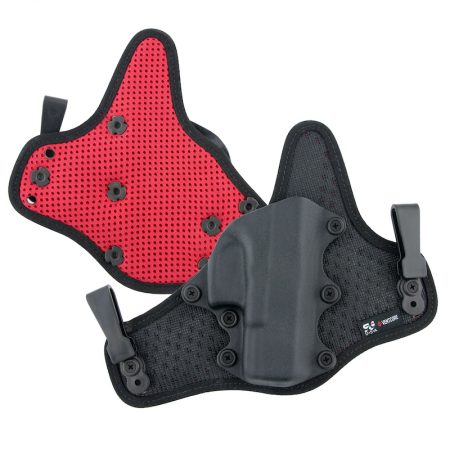 Buy from StealthgearMORE INFO
Buy from StealthgearMORE INFOStealthgear VentCore IWB Holsters
The Ventcore® Inside-the-Waistband (IWB) Standard holster is the original breathable holster. Since 2012, it has seen numerous updates and is still the most comfortable hybrid holster for carrying a full-frame firearm, like a Sig Sauer P226 or Glock 17, while maintaining exceptional concealability. The extended holster platform of the IWB Standard allows for the weight of a full-frame firearm to be evenly distributed around the belt line. This results in a comfortable, all-day concealed carry solution.
-
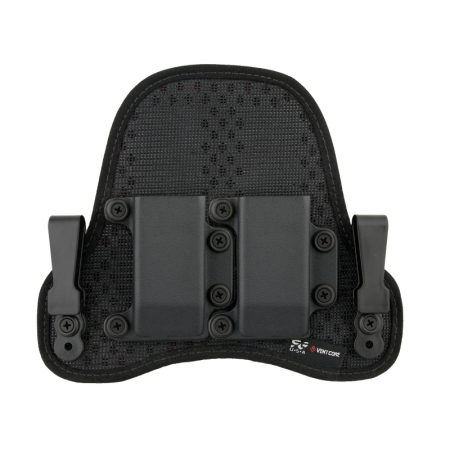 Buy from StealthgearMORE INFO
Buy from StealthgearMORE INFOStealthgear VentCore Mag Carrier
StealthGearUSA VentCore® IWB Mag & Utility Carrier Details:
- VentCore® platform
- Fully adjustable retention
- Interchangeability of various mag sizes
- Black oxide stainless steel fasteners
- Available in single or double mag
- Hand built in the USA
Rifle 262 (Field Rifle)
Most important is to bring a safe and functional rifle. If you haven’t cleaned your rifle, setting aside time before the event to clean it would be a good idea. If you have doubts about the safety of your rifle, now would be a good time to have it looked over by a qualified gunsmith or armorer.
- Rifle: These events will require a centerfire rifle.
- Caliber: Your rifle will need to be chambered in a caliber capable of reaching targets at up to 400 yards downrange. In general, this includes just about any center-fire rifle caliber. Note that a “pistol caliber carbine” chambered in a pistol caliber such as 9x19mm, .40 S&W or .45 ACP will not be appropriate for this course.
- Sights/Optics: GI-style iron aperture sights with the ability to dial in elevation adjustments, a low-powered fixed optic of no more than 4.5X power (such as an ACOG), or a variable power optic of 1–4x or 1–6x power. Some shooters may prefer a little more magnification; something like a 2.5-10x is also fine.
- Outdoors: These events often require a full day or weekend outside in the elements. Some ranges are remote and the firing line may be a walk from the parking lot. Bring everything you need for a day outside.
- Be Ready to Move: At many ranges the firing line will move back and forth as you shoot at different ranges from 100 to 600 yards. Pack efficiently using a backpack, load bearing gear, etc so that you can move from place to place. Plan on having a method to keep magazines and other key gear close at hand while moving about the range.
- Day Hike Gear: A basic first aid kit to include moleskin for blisters, sunscreen/sunburn treatment, insect bite relief and other basic supplies that you might bring on a day hike is appropriate.
Recommended Rifle 262 Equipment
Below is a list of equipment that our instructors have found to be functional, durable and useful:
-
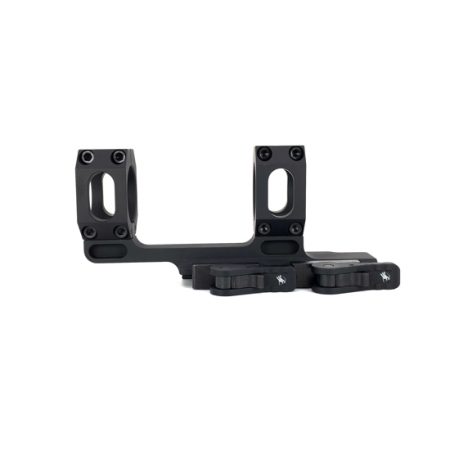 Buy from ADMMORE INFO
Buy from ADMMORE INFOAmerican Defense AD-RECON 1-Piece Scope Mount with 2″ Offset
The AD-RECON mount is made for putting high power glass onto a flattop style AR-15. The AD-Recon works with scopes with Objective Housings as large as 56 mm. Offered in a variety of ring sizes, the cantilever throws the scope out front, allowing you to get the right eye relief. It is precision machined from 6061 T6 aluminum and finished in hard coat T3 Mil-Spec anodize. It features the Patented QD Auto Lock™ Lever system to accommodate both in spec and out of spec rail systems. -
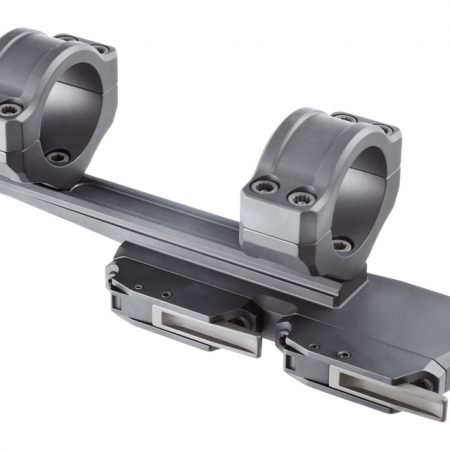 Buy from BobroMORE INFO
Buy from BobroMORE INFOBobro Engineering Dual Lever Precision Optic Mount 30mm 20 MOA
The Dual Lever series of precision optics mounts features the Patented [US Patent 8,567,105] BLAC™ lever system and are engineered for larger diameter scopes. The base has an extension that allows proper eye relief, even when using a non-monolithic rail. It is designed so that the base allows the use of a folding back up iron sight (BUIS). The structure is designed for maximum strength, and utilizes larger fasteners than our standard lineup. This mount is engineered to handle heavy optics and high recoil forces.
-
 Buy From MidwayUSAMORE INFO
Buy From MidwayUSAMORE INFOMagpul RLS 2-Point Sling
Features:
- Dedicated two-point sling with shooting support functions for practical field employment
- Magpul’s proprietary weave 1-1/4” wide nylon webbing material for strength and wear resistance
- Low-profile, lightweight and durable fasteners and hardware made from Magpul polymer
- Compatible with Magpul sling adapters and accessories, or any other 1.25” sling attachments (sold separately)
- Colored webbing has Near Infrared (NIR) treatment to reduce IR signature
-
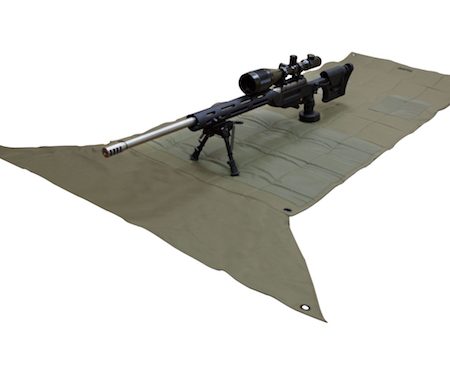 Buy from MidwayUSAMORE INFO
Buy from MidwayUSAMORE INFOMidwayUSA Competition Shooting Mat
When MidwayUSA set out to develop our competition shooting mat, we relied on our highly experienced staff for research and development. Some of the best shooters at MidwayUSA put their heads together and used their years of experience to create a great product for our customers.
-
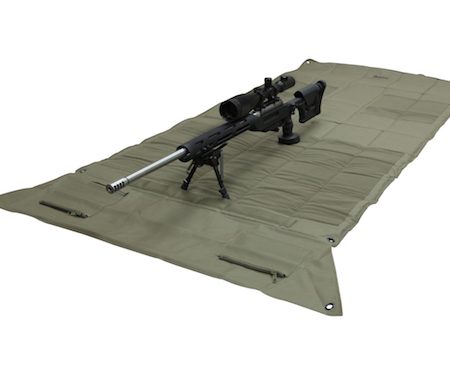 Buy from MidwayUSAMORE INFO
Buy from MidwayUSAMORE INFOMidwayUSA Pro Series Competition Shooting Mat
MidwayUSA Gen 2 Pro Series Competition Shooting Mat features a 1000D Cordura Nylon top, comfortable padding, additional storage pocket and a fully waterproof bottom. A sewn-in bipod pre-load web, four corner grommets, and two zippered pouches, make this mat an essential tool for any shooter looking to perfect his or her marksmanship. Added features including the sewn in handle and shoulder strap for easy transport. When not in use, the mat conveniently rolls up to for storage.
-
 Buy From AtskoMORE INFO
Buy From AtskoMORE INFORapid Rod Cleaning Rod
Rapid-Rod will keep your barrel clear and safe. Obstructions such as mud, snow, dirt, ice, shotgun wadding, shell casings, or a bullet can and do get lodged in chambers and barrels. This dangerous and frustrating situation renders your weapon useless until cleared.
-
 Buy from AmazonMORE INFO
Buy from AmazonMORE INFOSpiral Bound Index Cards
Spiral bound index cards are a great low-cost solution for a range notebook. Multiple sizes are available so you can choose the size that best fits your needs. These are usually available at any store that stocks office and/or school supplies as well as Amazon.
NOTE: the link associated with the “Buy from Amazon” button below is an “affiliate” link; clicking through and buying this product will earn Revere’s Riders a small commission on the sale. This income helps to support our firearms training programs going forward.
-
 Buy from MidwayUSAMORE INFO
Buy from MidwayUSAMORE INFOThe Outdoor Connection Talon Sling Swivels
Talon sling swivels feature all-metal construction with stainless steel springs. Machine finished, these swivels are extremely quiet in the field. Attach them to any standard swivel base. Features a Guaranteed Forever warranty. Prevents swivel from touching firearm when sling is properly connected. Quick release feature for easy mounting or removal.
IMPORTANT: if you are buying these for use with a US GI sling, you MUST get the wider 1 ¼” version of the sling swivel. The 1″ version is too narrow to fit a US GI sling.
-
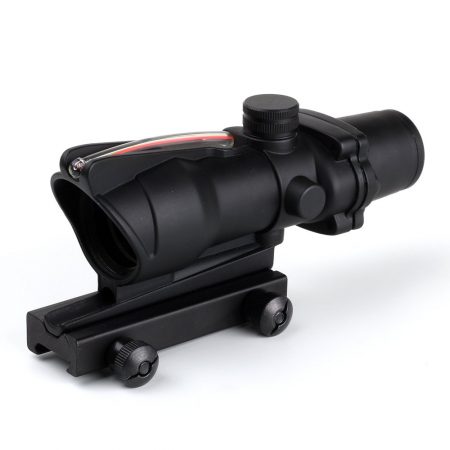
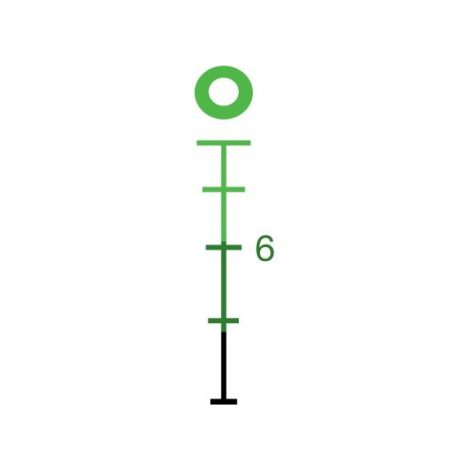 Buy from Optics PlanetMORE INFO
Buy from Optics PlanetMORE INFOTrijicon ACOG TA31 4x32mm
The reticle of the Trijicon TA31 ACOG 4×32 Tactical Scope ranges out to 800 Meters for 5.56(.223 cal) and hit fast in any light. Trijicon ACOG 4 x 32 Riflescopesare internally-adjustable, compact telescopic sights with tritium illuminated reticle patterns for use in low light or at night. The Bindon Aiming Concept (BAC) scope features bright daytime reticles using fiber optics which collect ambient light. Trijicon 4×32 ACOGs Fiber Optics & Tritium Illumination Scope combine traditional, precise distance marksmanship with close-in aiming speed. Although Trijicon ACOG 4 x 32 Scopes w/ Donut Reticle have many features which are very advantageous for military use, they were developed by Trijicon without government funding. Designed for use with the M16 family, every feature of its mechanical and optical design was chosen for a single purpose: to provide increased hit potential in all lighting conditions – without failure-prone batteries.
-
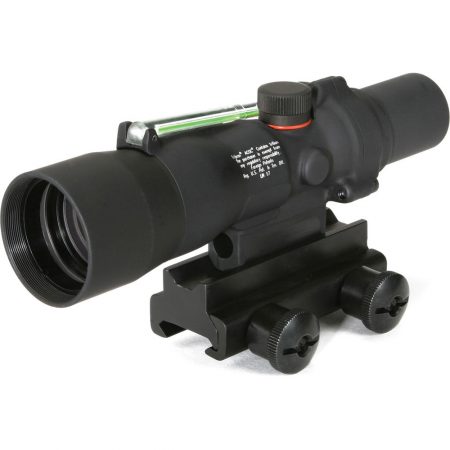
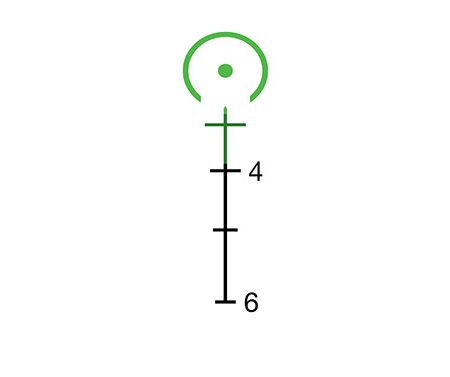 Buy from Optics PlanetMORE INFO
Buy from Optics PlanetMORE INFOTrijicon ACOG TA33 3x30mm
Trijicon ACOGs are internally-adjustable, compact telescopic sights with tritium illuminated reticle patterns for use in low light or at night. The Bindon Aiming Concept (BAC) scopes feature bright daytime reticles that use fiber optics to collect ambient light and automatically adjust the brightness to meet available light conditions. The ACOGs combine traditional, precise distance marksmanship with close-in aiming speed. Every feature of each scope’s mechanical and optical design was chosen for a single purpose: to provide increased hit potential in all lighting conditions—without failure-prone batteries.
-
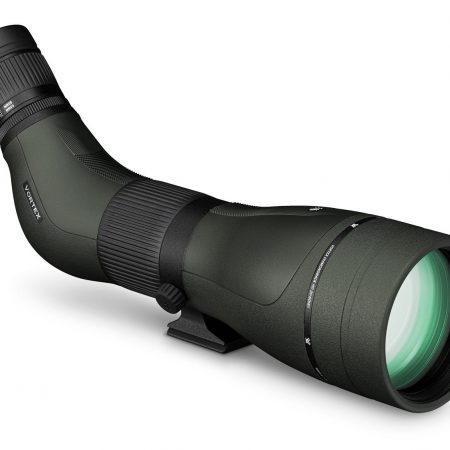 Buy from A&A OpticsMORE INFO
Buy from A&A OpticsMORE INFOVortex Diamondback HD 20-60×85 Angled Spotting Scope
Glassing out west demands an HD optic, but other systems can’t get you the clarity you need to see a tail twitch in low light, or pick a tine out of dense cover. The redesigned Diamondback HD spotting scopes have all the horsepower the long-distance hunter needs, and they excel in lowlight—right when you need it most. We’ve also streamlined the exterior for a sleeker, snag-free profile, building in a helical focus wheel.
-
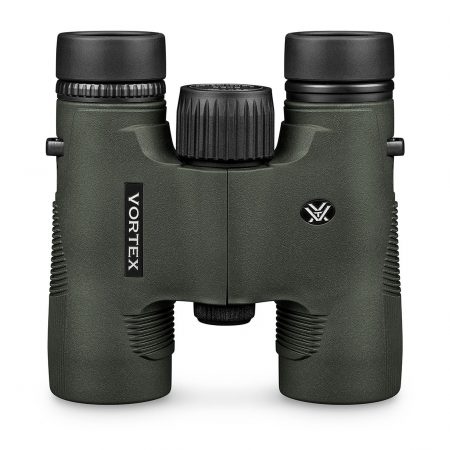 Buy from A&A OpticsMORE INFO
Buy from A&A OpticsMORE INFOVortex Diamondback HD 8×28 Binoculars
The Diamondback® HD smashes the scale of price vs performance, delivering a rock-solid optic that optically punches high above its class. The included GlassPakTM binocular harness keeps your glass close at hand, ready to deploy at a moment’s notice, all while providing protection and significantly more comfort than traditional neck straps.
-

 Buy from A&A OpticsMORE INFO
Buy from A&A OpticsMORE INFOVortex Strike Eagle 1-6×24 Riflescope
Speed and versatility—that’s what 1x variable optics offer AR shooters who need to engage targets from point-blank out to extended ranges. And that’s exactly what you’re going to get with Vortex’s new Strike Eagle 1-6 x 24. Take into consideration what it costs to get into this optic, and you may find you can’t afford not to buy it.
-
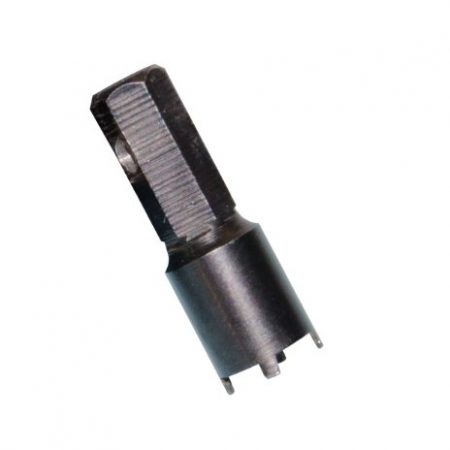 Buy from MidwayUSAMORE INFO
Buy from MidwayUSAMORE INFOWheeler Delta Series Front Sight Tool
This 4-prong front sight tool is designed to adjust the A2 front sight found on the AR-15, M16, and M4. It is machined from steel and has a black zinc finish to last for years. The key ring serves as a handle and helps keep the small tool accounted for.

